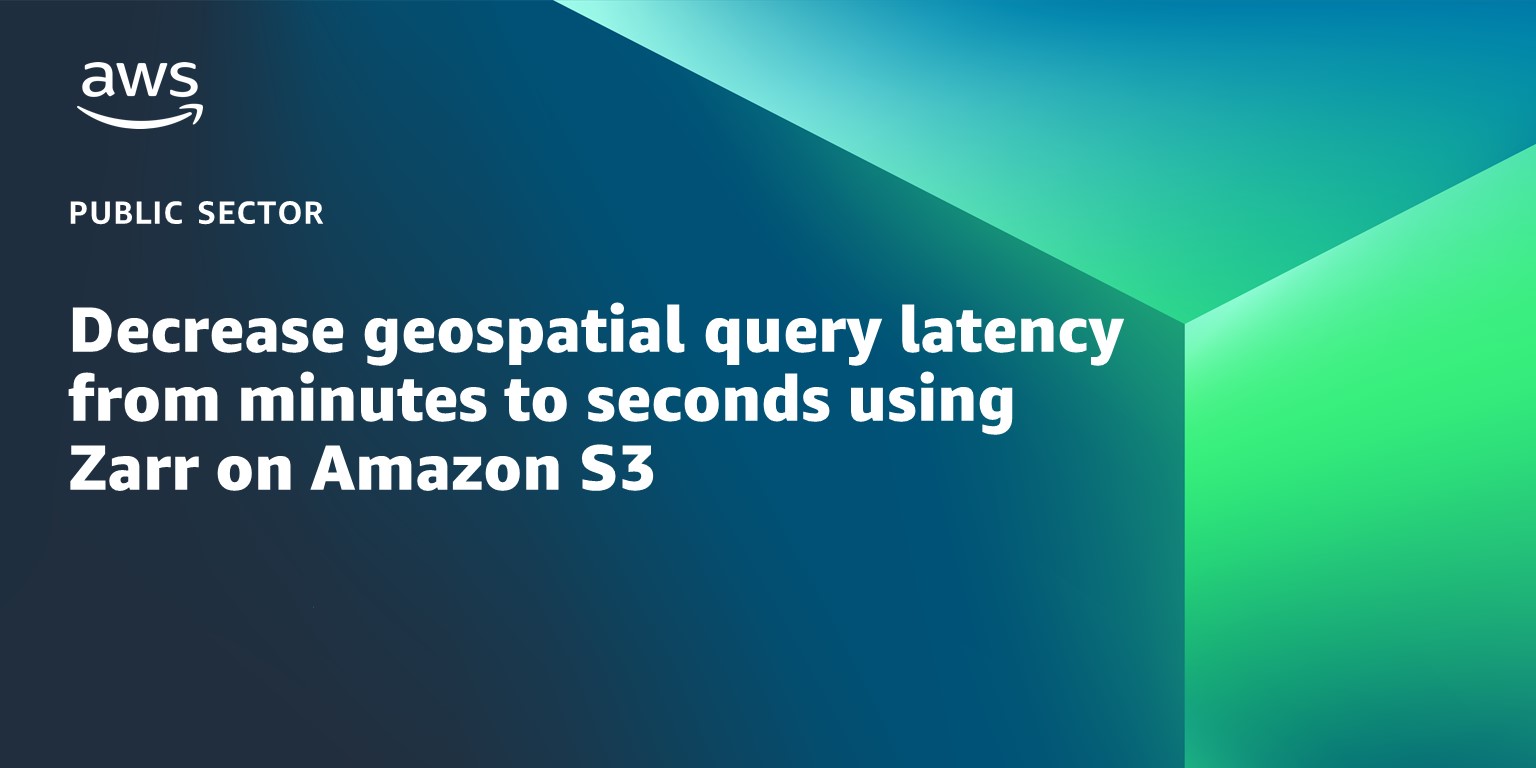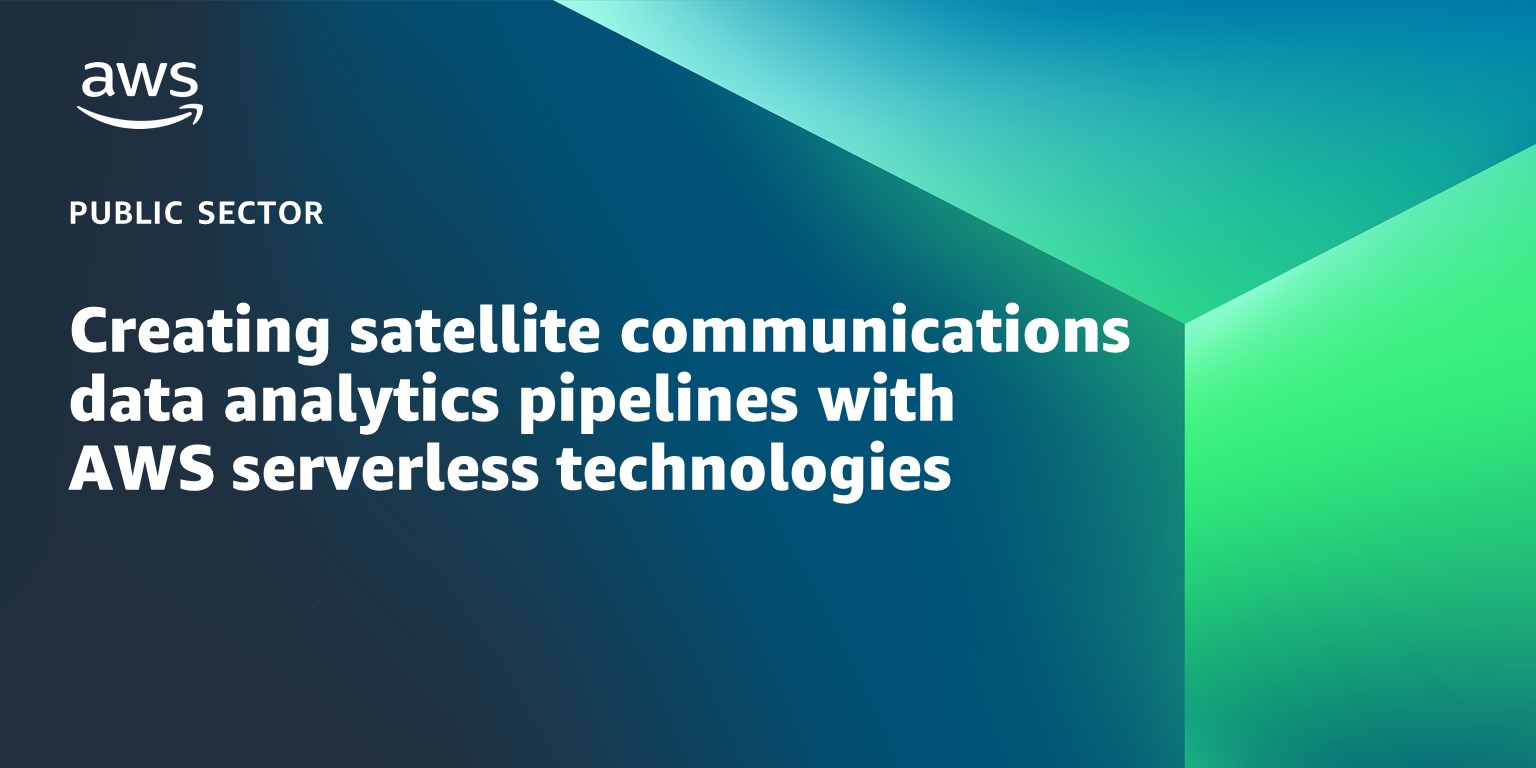AWS Public Sector Blog
Tag: technical how-to
Extracting, analyzing, and interpreting information from Medicaid forms with AWS
What if paper forms could be processed at the same speed as digital forms? What if their contents could be automatically entered in the same database as the digital forms? Medicaid agencies could analyze data in near real time and drive actionable insights on a single dashboard. By using artificial intelligence (AI) and machine learning (ML) services from AWS, Medicaid agencies can create this streamlined solution. In this walkthrough, learn how to extract, analyze, and interpret relevant information from paper-based Medicaid claims forms.
How to store historical geospatial data in AWS for quick retrieval
Learn how to store historical geospatial data, such as weather data, on AWS using Amazon DynamoDB. This approach allows for virtually unlimited amounts of data storage combined with query performance fast enough to support an interactive UI. This approach can also filter by date or by location, and enables time- and cost- efficient querying.
Using Amazon IVS for turnkey town halls
Many nonprofit organizations need to provide their donors, members, and beneficiaries with relevant information that they can access from anywhere. Over the past few years, nonprofit organizations have seen positive results by hosting live town hall events in which members can receive important information and ask questions. In this walkthrough, learn how to set up Amazon IVS to build a turnkey live-streaming platform that integrates into an existing website.
Optimizing your nonprofit mission impact with AWS Glue and Amazon Redshift ML
Nonprofit organizations focus on a specific mission to impact their members, communities, and the world. In the nonprofit space, where resources are limited, it’s important to optimize the impact of your efforts. Learn how you can apply machine learning with Amazon Redshift ML on public datasets to support data-driven decisions optimizing your impact. This walkthrough focuses on the use case for how to use open data to support food security programming, but this solution can be applied to many other initiatives in the nonprofit space.
Building a team knowledge base with Amazon Lightsail
Building an organized system for common information—such as addresses, phone numbers, purchasing account numbers, a curated and annotated literature section, lab recipes and protocols, meeting schedules, and links to commonly used online tools—can prove extremely valuable for professors and their teams. Building this knowledge base on AWS with Amazon Lightsail can save hours of administration and maintenance time, while providing additional control and flexibility for remote access. In this blog post, learn how to set up a content management system (CMS) using Lightsail, including how to manage basic network security, backup, and upgrades, to build a knowledge base for your lab, agency, startup, or other team-based environment.
Decrease geospatial query latency from minutes to seconds using Zarr on Amazon S3
Geospatial data, including many climate and weather datasets, are often released by government and nonprofit organizations in compressed file formats such as the Network Common Data Form (NetCDF) or GRIdded Binary (GRIB). As the complexity and size of geospatial datasets continue to grow, it is more time- and cost-efficient to leave the files in one place, virtually query the data, and download only the subset that is needed locally. Unlike legacy file formats, the cloud-native Zarr format is designed for virtual and efficient access to compressed chunks of data saved in a central location such as Amazon S3. In this walkthrough, learn how to convert NetCDF datasets to Zarr using an Amazon SageMaker notebook and an AWS Fargate cluster and query the resulting Zarr store, reducing the time required for time series queries from minutes to seconds.
Using machine learning to customize your nonprofit’s direct mailings
Many organizations perform direct mailings, designed to support fundraising or assist with other efforts to help further the organization’s mission. Direct mailing workflows can use everything from a Microsoft Word mail merge to utilizing a third-party mailing provider. By leveraging the power of the cloud, organizations can take advantage of capabilities that might otherwise be out of reach, like customized personalization at scale. In this walkthrough, learn how organizations can utilize machine learning (ML) personalization techniques with AWS to help drive better outcomes on their direct mailing efforts.
Using AWS IoT TwinMaker to build a spacecraft digital twin
Digital twin technology helps drive the digital transformation of the space sector by optimizing complex spacecraft design, engineering, and operation. Increasingly, customers turn to AWS IoT TwinMaker from AWS to more quickly and simply create simulations that provide live actionable insights and improve operational performance of real-life systems. Learn how you can use AWS to create digital twin simulations for complex spacecraft, demonstrated using the International Space Station (ISS) via publicly available telemetry from the National Aeronautics and Space Administration (NASA).
Creating satellite communications data analytics pipelines with AWS serverless technologies
Satellite communications (satcom) networks typically offer a rich set of performance metrics, such as signal-to-noise ratio (SNR) and bandwidth delivered by remote terminals on land, sea, or air. Customers can use performance metrics to detect network and terminal anomalies and identify trends to impact business outcomes. This walkthrough presents an approach using serverless resources from AWS to build satcom control plane analytics pipelines. The presented architecture transforms the data to extract key performance indicators (KPIs) of interest, renders them in business intelligence tools, and applies machine learning (ML) to flag unexpected SNR deviations.
Announcing the AWS Well-Architected Operational Readiness Review lens
AWS announced the release of the Operational Readiness Review (ORR) program as a custom lens for the AWS Well-Architected Tool, which is designed to help you review the state of your applications and workloads against architectural best practices, identify opportunities for improvement, and track progress over time. Creating a custom lens for the Well-Architected Tool with the ORR program can help supplement Well-Architected reviews by including lessons learned that are specific to your business, culture, tools, and governance rules. Learn how to set up the ORR as a custom lens in this walkthrough.









